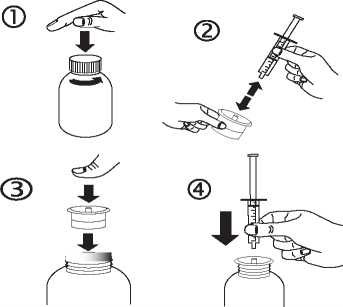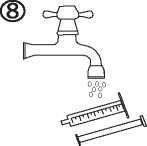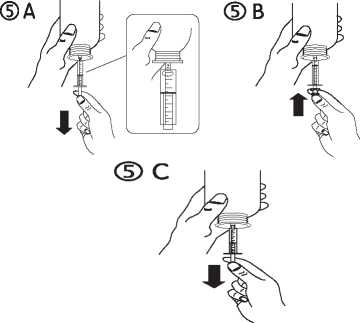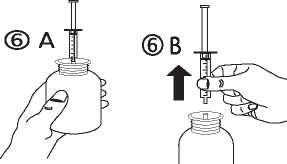Lorazepam 1Mg/Ml Oral Solution


| |
1. What Lorazepam is and what
it is used for

Other medicines and Lorazepam

'-
3. How to take Lorazepam
Read all of this leaflet carefully before you start taking this medicine because it contains important information for you.
► Keep this leaflet. You may need to read it again.
► If you have any further questions, ask your doctor or pharmacist.
► This medicine has been prescribed for you only. Do not pass it on to others. It may harm them, even if their signs of illness are the same as yours.
► If you get any side effects, talk to your doctor or pharmacist. This includes any possible side effects not listed in this your leaflet. See section 4.
The name of your medicine is Lorazepam 1mg/ml Oral Solution but it will be referred to as 'Lorazepam' throughout this leaflet.
What is in this leaflet
1. What Lorazepam is and what it is used for
2. What you need to know before you take Lorazepam
3. How to take Lorazepam
4. Possible side effects
5. How to store Lorazepam 1mg/ml Oral Solution
6. Contents of the pack and other information
Lorazepam is a member of a group of medicines called benzodiazepines. It can help to relieve anxiety. Lorazepam is prescribed as short-term therapy for anxiety (2-4 weeks), or sleeping difficulties due to anxiety that significantly affects normal daily life. It may also be used as a sedative before surgery or operative dental treatment.
Lorazepam is not to be used for longer than 4 weeks or to treat mild or moderate anxiety in adults.
2. What you need to know before you take Lorazepam
V_/
□ Do not take Lorazepam:
► if you have severe breathing or chest problems
► if you are allergic to benzodiazepines or any of the other ingredients in Lorazepam (see list under 'What Lorazepam contains')
► if you have myasthenia gravis (very weak or tired muscles)
► if you have serious liver problems
► if you suffer from sleep apnoea (breathing problems when you are asleep)
► if you are breast-feeding, since the drug may pass into breast milk.
► if you are planning a pregnancy or are pregnant.
If you have been only prescribed Lorazepam for anxiety and no other medications, please consult with your doctor whether other medications should also be prescribed.
When special care is required with Lorazepam
Please consult your doctor if any of the following apply:
► if you abuse or have in the past abused drugs or alcohol
► if you have a personality disorder. If so, you have a greater chance of becoming dependent on lorazepam
► if you have any kidney or liver problems
► if you are suffering from depression, since lorazepam may increase any suicidal feelings which you may have
► if you have suffered from depression before, since it could reoccur during treatment with lorazepam
► if you suffer from breathing problems
► if you are suffering from an eye problem called glaucoma e.g. high pressure within the eye
Tell your doctor or pharmacist that you are taking lorazepam before taking any other medicine or if you enter hospital for treatment, or if you are taking any other medicines, including those which have not been prescribed by a doctor, since they may affect the way Lorazepam works.
Lorazepam may also affect the way other drugs work. In particular, you should tell your doctor if you are taking any other sedative (e.g. barbiturates or antihistamines), anti-anxiety drugs, anti-depressants, strong pain killers (e.g. methadone), drugs for epilepsy (e.g. phenobarbital or valproate), antihistamines, or drugs for mood or mental disorders (e.g. chlorpromazine, loxapine or clozapine), drugs for cataplexy; treating HIV; to treat delusions or hallucinations; to help with indigestion (e.g. cisapride or omeprazole); muscle relaxants (e.g. baclofen and tizanidine); drugs for addiction treatment (e.g. lofexidine and disulfiram); TB drugs such as isoniazid; antibiotics such as erythromycin; drugs to treat high blood pressure; Parkinson's disease drugs e.g. levodopa; oestrogen-containing contraceptives and drugs for asthma (theophylline). The dose of these drugs may need to be reduced before you can take lorazepam.
Lorazepam with food, drink and alcohol.
Grapefruit juice and drinks containing caffeine should be avoided as they can affect the way that Lorazepam works.
Do not drink alcohol while you are taking Lorazepam.

Pregnancy and breast-feeding
► Do not take this medicine if you are pregnant, or might become pregnant, without consulting your doctor. Benzodiazepines, including lorazepam, may cause damage to the foetus if taken during early pregnancy.
► If you take this medicine during late pregnancy or during labour, your baby, when born, may be less active than other babies, have a low body temperature, be floppy, or have breathing or feeding difficulties for a while. Your baby's response to the cold might be temporarily impaired. If this medicine is taken regularly in late pregnancy, your baby may develop withdrawal symptoms after birth.
► Do not take this medicine if you are breast-feeding, since the drug may pass into breast milk, and cause the baby to be less active and unable to suckle.
Driving and using machines
Lorazepam may make you feel dizzy, sleepy or forgetful during the day, or may affect your concentration. This may affect your performance at skilled tasks such as driving machinery or operating machinery by affecting your vision or muscle function. You should not take part in any other activities where this could put yourself or others at risk.
You should avoid alcohol while you are taking lorazepam, since this may make you very drowsy and seriously affect your ability to drive or use machines.
The medicine can affect your ability to drive as it may make you feel sleepy or dizzy.
► Do not drive while taking this medicine until you know how it affects you.
► It is an offence to drive if this medicine affects your ability to drive.
► However, you would not be committing an offence if:
• The medicine has been
prescribed to treat a medical or dental problem and
• You have taken it according to the instructions given by the prescriber or in the information provided with t he medicine and
• It was not affecting your ability to drive safely.
Talk to your doctor or pharmacist if you are not sure whether it is safe for you to drive while taking this medicine.
Lorazepam 1mg/ml Oral Solution contains:
This medicinal product contains small amount of ethanol (alcohol), less than 100mg per ml. The amount of ethanol 96% in each ml is 20.21mg.
Always take Lorazepam 1mg/ml Oral Solution exactly as your doctor has told you. The label on your medicine should also tell you. You should check with your doctor or pharmacist if you are not sure.
Adults
► Anxiety: 1 - 4 ml (1 - 4mg) daily in divided doses. Your doctor will tell you how often to take the medicine.
► Sleeping Problems: 1 - 2ml (1 -2mg) before going to sleep. You should make sure that you will be able to sleep for 7 to 8 hours before taking the medicine.
► Before Surgery: 2 - 3ml (2 - 3mg) the night before your operation and 2 - 4ml (2 - 4mg) 1 or 2 hours before your operation.
Elderly or patients with liver or kidney problems
Lower doses may be sufficient in these patients. They may respond to half the usual adult dose or less.
Lorazepam is not recommended for use in children.
Lorazepam is usually prescribed for short courses of treatment, lasting from a few days to 4 weeks including a dose reduction at the end. This reduces the risk of becoming dependent on Lorazepam, or suffering unpleasant effects when you stop taking the medicine (See 'If you stop taking Lorazepam' section).
The beneficial effect of Lorazepam may be less apparent after several weeks of use. If you are given lorazepam for more than 4 weeks, your doctor might want to take blood samples occasionally to check your blood and liver, since drugs like lorazepam have occasionally affected blood and liver function.
Method of administration:
This medicinal product contains medium chain triglycerides which reacts with polystyrene materials and makes it brittle upon contact.
Do not use polystyrene dosing devices for measuring the dose.
Use the measuring syringe provided in the pack to deliver the required dose orally.
The required dose should be drawn from the container into the graduated syringe provided using the syringe adaptor (see detailed instructions below). The syringe should be held in the mouth of the patient, and the contents of the syringe should then be ejected into the mouth and swallowed.
Instructions for the use of syringe:
a) Open the bottle: press the cap and turn it anticlockwise (figure 1).
b) Separate the adaptor from the syringe (figure 2). Insert the adaptor into the bottle neck (figure 3). Ensure it is properly fixed. Take the syringe and put it in the adaptor opening (figure 4).
Turn over
PIL/UK/MFG024/05/v6


4. Possible side effects
| |
6. Contents of the pack and
other information
-_/
What Lorazepam 1mg/ml Oral Solution contains
The active substance is lorazepam.
Each ml of oral solution contains 1mg lorazepam.
The other ingredients are ethanol (alcohol) and medium chain triglycerides.
What Lorazepam 1mg/ml Oral Solution looks like and contents of the pack
Lorazepam 1mg/ml Oral Solution is a clear, colourless to pale yellow colour oral solution supplied in an amber glass bottle, holding 60ml or 150ml of solution, with tamper evident child resistant plastic cap. The pack also contains a 1ml oral syringe and a bottle/syringe adaptor.
Not all pack sizes may be marketed.
c) Turn the bottle upside down. Fill the syringe with a small amount of solution by pulling the piston down (figure 5A), then push the piston upwards in order to remove any possible bubble (figure 5B). Pull the piston down to the graduation mark corresponding to the quantity in millilitres (ml) prescribed by your doctor (figure 5C).

d) Turn the bottle the right way up (figure 6A). Remove the syringe from the adaptor (figure 6B).

e) Empty the contents of the syringe into the patient's mouth by pushing the piston to the bottom of the syringe (figure 7). Close the bottle with the plastic screw cap. Wash the syringe with water (figure 8).

I f you take more Lorazepam than you should
If anyone has taken an overdose of Lorazepam (that is more than the doctor has prescribed), seek medical help immediately, either by calling your doctor, or going to the nearest casualty department. Always take the labelled medicine pack with you, even if no medicine is left.
► Do not stop taking the medicine suddenly. This could lead to more serious symptoms such as loss of the sense of reality, feeling unreal or detached from life, and unable to feel emotion. Some patients have also experienced numbness or tingling of the arms or legs, tinnitus (ringing sounds in the ears), oversensitivity to light, sound and touch, uncontrolled or overactive movements, twitching, shaking, feeling sick, being sick, stomach upsets or stomach pain, loss of appetite, agitation, abnormally fast heartbeats, panic attacks, dizziness or feeling that you are about to fall, memory loss, hallucinations, feeling stiff and unable to move easily, feeling very warm, convulsions (sudden uncontrolled shaking or
jerking of the body).
► Patients taking anti-depressants and patients with seizure disorders may be more likely to experience convulsions.
If you suffer from any of these symptoms, ask your doctor for advice immediately.
Like all medicines, Lorazepam can cause side effects, although not everybody gets them. These are usually not serious and do not last long.
If you experience any of the following more rare unwanted effects, you should tell your doctor immediately (these effects are more likely to occur in elderly patients):
► Restlessness, agitation, irritability, aggressiveness, violent anger, sleeping difficulties, nightmares, hallucinations, personality changes, sexual arousal, abnormal behaviour or false beliefs
► Unexplained bleeding and/or bruising; increased risk of infections e.g. frequent sore throats, mouth ulcers, weakness and pale skin as these are symptoms of blood dyscrasia
► Severe allergic reactions e.g. difficulty in breathing, swelling of the lips, mouth, tongue, throat, hands, feet and/or severe faintness or dizziness
► Jaundice e.g. yellowing of the skin, eyes, nose, mouth, pale coloured stools (faeces) and dark coloured urine
Reporting of side effects
If you get any side effects, talk to your doctor or pharmacist. This includes any possible side effects not listed in this leaflet. You can also report side effects directly via the Yellow Card Scheme at www.mhra.gov.uk/yellowcard.
By reporting side effects you can help provide more information on the safety of this medicine.
-|
5. How to store Lorazepam
1mg/ml Oral Solution _
► Keep out of the sight and reach of children.
► Do not use after the expiry date which is printed on the carton and bottle label after 'Exp'. The expiry date refers to the last day of that month.
► Store and transport refrigerated (2°C - 8°C).
► For 60ml pack size: Discard 30 days after first opening.
► For 150ml pack size: Discard 90 days after first opening.
► Keep the bottle in the outer carton in order to protect from light.
► Do not throw away any medicines via wastewater or household waste. Ask your pharmacist how to dispose of medicines you no longer use.
These measures will help protect the environment.
POM
If you forget to take Lorazepam
► If you forget to take your medicine for anxiety, you should take it as soon as you remember if it is less than 3 hours since your usual time. If more than 3 hours has passed from when you usually take your medicine, just take your next dose when it is due.
► Do not take a double dose to make up for a forgotten dose.
► If you forget to take your medicine for sleeping problems, only take it if you will be able to sleep for 7 to 8 hours afterwards.
If you stop taking Lorazepam
► After you have finished your prescribed treatment with lorazepam, your doctor will decide if you need further treatment.
► The amount of Lorazepam and how often you take your medicine should always be reduced slowly before stopping it. This allows your body to get used to being without your medicine, and reduces the risk of unpleasant effects when you stop taking the medicine. Your doctor will tell you how to do this.
► On stopping lorazepam, you may experience symptoms such as headaches, muscle pain, anxiety, tension, depression, restlessness, sweating, confusion or irritability.
► Your original sleeplessness may also return. If you suffer from any of these symptoms, ask your doctor for advice.
However, you should tell your doctor if any of the following symptoms are severe or become troublesome:
► Daytime drowsiness, dizziness, reduced alertness, poor muscle control, muscle weakness, fatigue, hypersensitivity including anaphylaxis (allergic reactions), confusion, depression, numbed emotions, difficulty controlling urges and impulses to speak, act or show emotions, a feeling of well-being for no reason, appetite changes, sleep problems, changes in sex drive, decreased orgasm, thoughts of harming or killing yourself, becoming dependent on Lorazepam, headache, slurred speech, memory loss or forgetfulness, trembling or shaking, impaired consciousness (ultimately coma), problems with vision including double vision or blurred vision, worsening of sleep apnoea e.g. loud snoring, restlessness and choking/gasping during the night, breathing difficulties, stomach upsets, nausea, constipation, changes in the amount of saliva in the mouth, skin problems such as rashes and inflammation, erectile dysfunction
Other rare unwanted effects, which you may not be aware of whilst taking Lorazepam, include blood or liver function changes, or low blood pressure, or low body temperature.
If any of the side-effects get serious, or if you notice any side-effects not listed in this leaflet, please tell your doctor or pharmacist.
Marketing Authorisation Holder and Manufacturer:
Thame Laboratories,
Unit 4, Bradfield Road,
Ruislip, Middlesex,
HA4 0NU,
UK

Thame Laboratories
s > «.
If this leaflet is hard to see or read, please call +44 (0) 208 515 3700 for help.
This leaflet was last revised in 11/2016.
PIL/UK/MFG024/05/v6